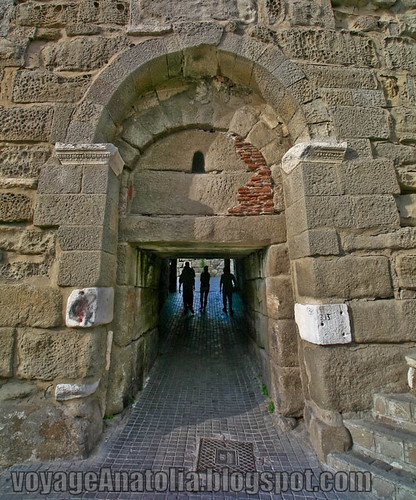
Gate of Centuries, originally uploaded by voyageAnatolia.
Gate of Amasra
Amasra derives its name from Amastris, niece of the last Persian king Darius III. She married Dionysius, tyrant of Heraclea. She combined four Ionian colonies, Sesamus, Cytorus, Cromna, also mentioned in the Iliad, and Tium. Tium, says Strabo, soon detached itself from the community, but the rest kept together, and Sesamus was the acropolis of Amastris. Amastris was a confederation or union of three places. The territory of Amastris produced a great quantity of boxwood, which grew on Mount Cytorus.